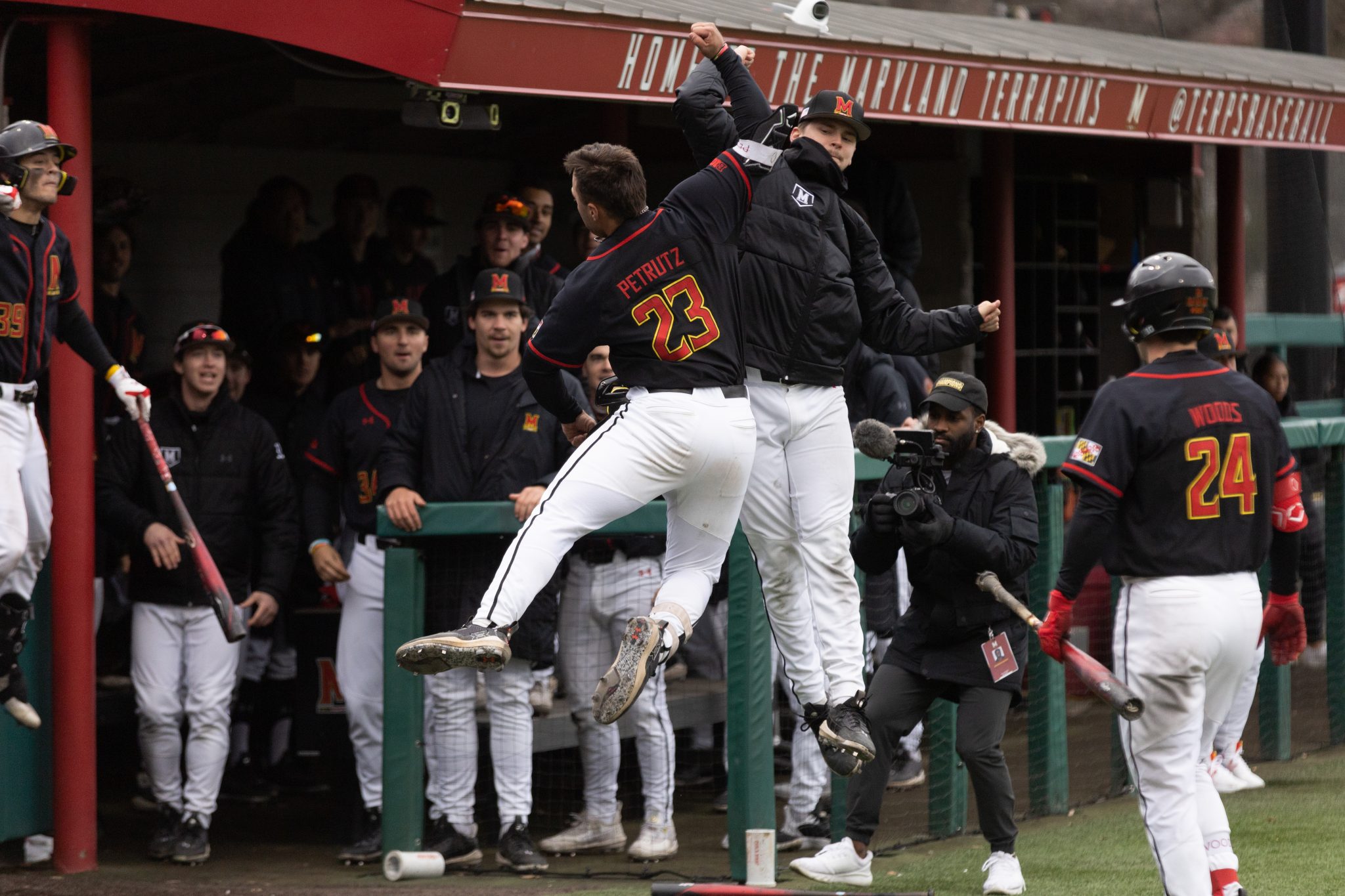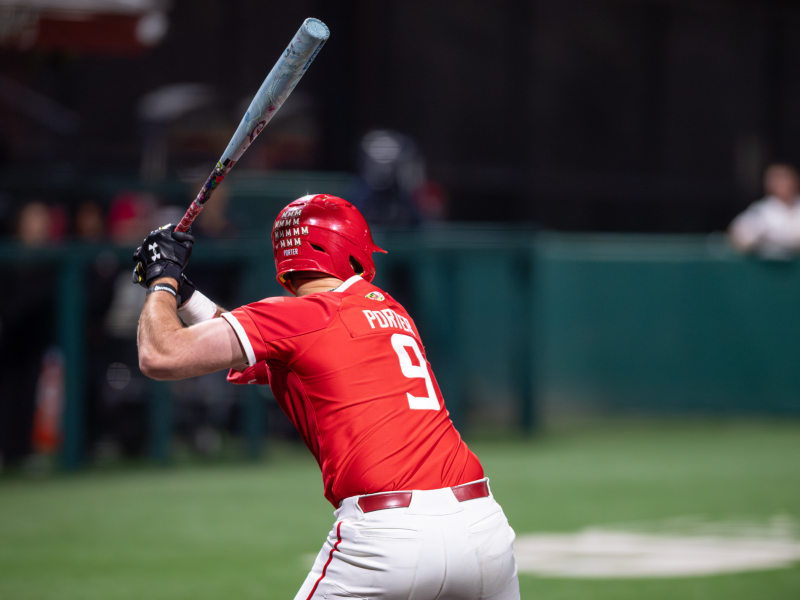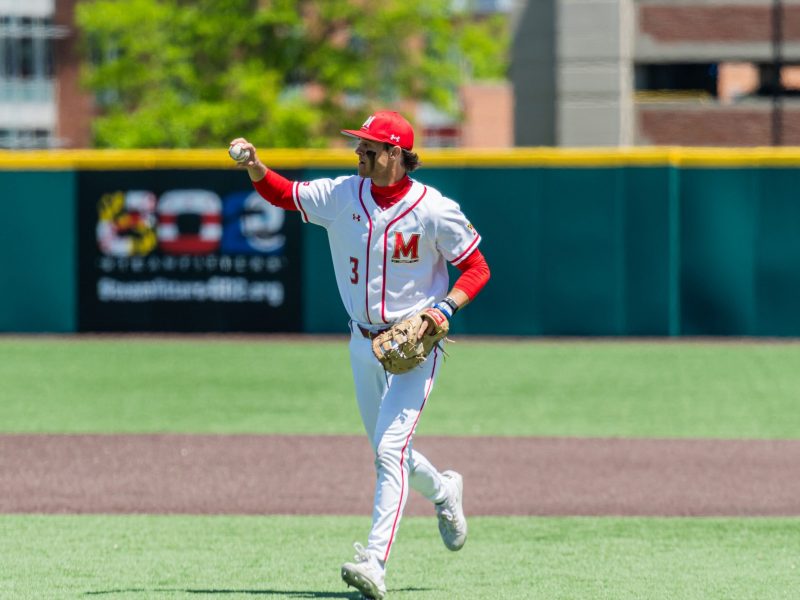During Rob Vaughn’s first year as an assistant coach, Maryland baseball hit a measly 13 home runs and no player had more than five.
But that era of Maryland baseball, which featured dismal power numbers through the early years of the coach’s tenure, is over.
In 2022, eight players logged 10 or more homers and the Terps slugged a program-record 137. This season, they’re already at 109 with two regular season series remaining.
Behind those gaudy stats are detailed player report cards that associate head coach Matt Swope puts together to grade a player’s offensive approach.
Vaughn’s top assistant’s reports evaluate players based on how well they attacked the “damage zone” — the middle of the strike zone — and if they ignored balls outside of it. Most hitters know their own damage zone, the Terps’ head coach said. But when they don’t, the visualization helps break them out of a slump or alerts coaches if players aren’t seeing the ball well enough.
The detailed yet digestible visualization is one of several analytical advancements in Maryland’s program during the two coaches’ tenures. Players trust the offensive approach because of its proven effectiveness — the team’s selective approach also produces less strikeouts and more walks.
[Bent knees, a veteran coach and a Swiss philosophy: How Elijah Lambros fixed his swing]
“It’s a cheat code,” Swope said.
The Terps have led the Big Ten in free passes the last two seasons, including 329 this year. Luke Shliger’s 53 walks lead the country.
And as homers have risen, strikeouts have fallen. Maryland hitters are striking out 7.42 times per contest this season, down from 8.31 per game last year. Three everyday players — Shliger, Matt Shaw and Ian Petrutz — walk more often than they strike out. The Terps had only one such hitter the two previous seasons.
After growing more accustomed to Swope’s detailed feedback, Maryland’s sluggers are more cautious about lasering in on pitches they can drive and ignoring ones they can’t.
“It’s all data driven, but where’s the application?” Swope said. “We know launch angle, we know results, we know all these things. But when you can give the player his own report card of what he should be doing … this is what his body wants to do, I think you’re giving any player what they ever wanted.”
It’s possible because of how effortlessly Swope breaks down the statistics. He wasn’t a confident communicator when he began as a coach, Vaughn said. As he’s watched Swope spend more time as a coach, he’s also seen the former Maryland legend’s communication skills mature.
“He’s grown in his knowledge and he’s constantly trying to learn more, but his ability to communicate those things are some of the biggest things I’ve seen from him,” Vaughn said.
Swope agreed.
“I’m a completely different person,” Swope said. “I made a lot of mistakes when I first started coaching and nobody’s perfect.”
[Nick Lorusso breaks Maryland baseball’s single-season RBI record in 20-5 win over Nebraska]
Chris Alleyne, Maxwell Costes, Shaw and Nick Lorusso led the surge in 2022. The four combined for 77 home runs, more than the entire team hit the year prior. This season, the Terps have the second-most homers in the country. Shaw became Maryland’s all-time career home run leader and has gone back and forth with Lorusso for the team lead.
Those players have benefited most from Maryland’s coaching style. They also differ from players on Vaughn’s previous rosters who played a less power-centric style of offense.
“Our older players weren’t the physical, drive the ball out of the yard type of guys,” Vaughn said. “They were more … dynamic in some ways, but not as powerful.”
Vaughn and Swope don’t recruit players strictly for power. Instead, they seek good hitters overall who they can extract power from with the data they have available. The proven results have the Terps buying into the approach.
Swope tries to never use the word “home run.” But even if the coach refuses to dwell on the long ball, his team has hit them at a much higher rate than in years past. He and Vaughn are reimagining how Maryland plays offense and turning the team into one of college baseball’s best power-hitting squads.
“It’s just a product of having a good plan and swinging at the right pitches,” Shaw said. “If we keep doing that, we’re gonna hit a lot more.”



